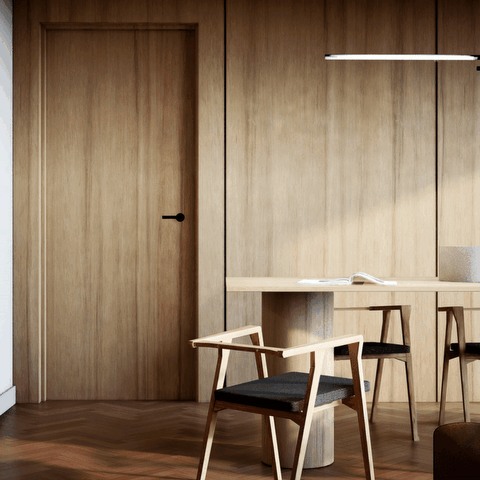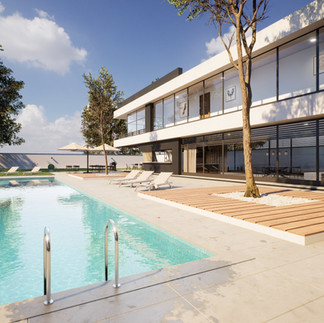Real-Time Graphics vs. Traditional Rendering: The New Era of Architectural Visualization
- Jonas Grumann
- Jan 10
- 3 min read
Updated: Jan 13
What are Real-Time Graphics?
Real-time graphics refer to computer-generated imagery (CGI) that is created and displayed on the screen instantly as it’s being generated. Unlike traditional rendering, where an image is processed and finalized over a longer period, real-time graphics can be manipulated and viewed in real time, allowing immediate visual feedback as changes are made.
In architecture, real-time rendering tools, such as Unreal Engine, Unity, or Enscape, allow architects and clients to interact with 3D models in a fully immersive environment. This means that rather than waiting for a rendering to be calculated and processed over hours or days, architects and clients move freely in the scene and tweak elements of their design and see the result immediately.
How Real-Time Graphics Differ from Traditional Renders
Rendering Speed
Real-Time Graphics: These tools generate images instantly, allowing architects and clients to view and interact with the design as it unfolds. Real-time graphics are designed to continuously process changes and display them immediately.
Traditional Renders: Traditional rendering is a more time-consuming process that can take hours or even days to produce a single high-quality image. The render engine calculates all the lighting, shadows, textures, and geometry before producing the final image.

Interactivity
Real-Time Graphics: The key difference here is interactivity. Users can walk through the space, adjust materials, lighting, and layouts in real time, and experience the design from different perspectives instantaneously. Since tools like Unreal Engine are essentially game engines, you can do whatever you can think of, from immersive walkthroughs to interactive features that bring your design to life. With a programmer on board at Into, we can deliver custom solutions and create unique experiences tailored to each project.
Traditional Renders: Traditional renders are static; once an image is produced, it is set and cannot be adjusted without starting the rendering process again.
Quality and Detail
Real-Time Graphics: While real-time renders are improving in quality with advancements in technology, they are generally optimized to display faster, so they may not offer the same level of detail or accuracy as traditional renders. However, they often strike a balance between quality and performance.
Traditional Renders: These tend to provide the highest quality images, with intricate lighting, textures, and shading, as they are not bound by the need for real-time performance. Traditional rendering processes allow for very detailed, photorealistic images.
Realtime renders by into visual
Flexibility in Changes
Real-Time Graphics: Changes are applied on-the-fly, making it easy to experiment with design choices. Whether changing the wall color or altering the room layout, the ability to see the outcome immediately makes it easier to explore different concepts.
Traditional Renders: Any change made in the design often requires a new round of rendering, which can be time-consuming and sometimes lead to delays.
Why Real-Time Graphics Are a Game Changer in Architecture
Real-time graphics offer a level of flexibility, speed, and interactivity that traditional rendering methods simply can’t match. These tools provide architects and clients with the ability to make quicker, more informed decisions. Whether it’s exploring the lighting of a space throughout the day, testing material combinations, or walking through a virtual model, real-time graphics enhance the design process in ways that traditional methods can’t replicate.
Real-time graphics have become essential for streamlining architectural workflows, improving client presentations, and ensuring that designs are both practical and visually compelling before construction even begins.
By offering instant visual feedback and full control over design details, real-time graphics enable architects to refine and communicate their visions more effectively than ever before.
Contact us today to work with us on your first realtime project!
We're proud to be among the first in Switzerland to offer realtime renders. Contact us and let us show you how realtime graphics can help your project.













